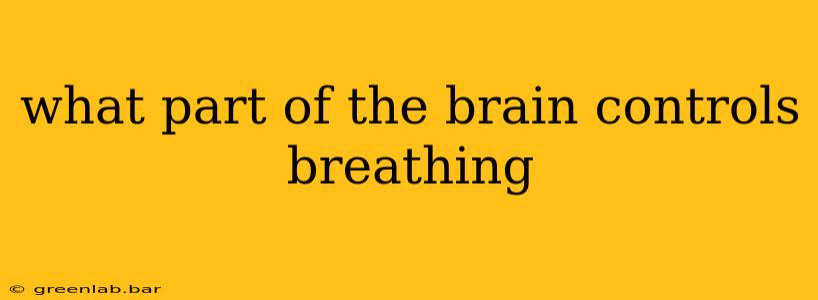Breathing, an essential function for survival, isn't something we consciously control every second of every day. This seemingly automatic process is actually a complex interplay of different brain regions working in concert. While no single area is solely responsible, the brainstem, specifically the medulla oblongata and pons, play the most crucial roles in regulating our respiratory rhythm.
The Brainstem: The Respiratory Control Center
The brainstem, located at the base of the brain, connects the cerebrum and cerebellum to the spinal cord. Within the brainstem, two key areas orchestrate breathing:
1. Medulla Oblongata: The Rhythm Generator
The medulla oblongata houses the respiratory rhythm generator (RRG), a network of neurons that establishes the basic rhythm of breathing. Think of the RRG as the pacemaker of respiration – it sends out rhythmic signals that stimulate the muscles involved in inhalation and exhalation. This rhythmic pattern, while fundamental, is constantly adjusted based on the body's needs.
2. Pons: Fine-Tuning Respiration
The pons, located above the medulla, doesn't generate the basic rhythm but acts as a crucial modulator. It contains two main respiratory centers:
- Pneumotaxic center: This center helps regulate the rate and depth of breathing by limiting the duration of inspiration. Essentially, it acts as a "brake" on the RRG, preventing overly deep or prolonged breaths.
- Apneustic center: This center promotes longer and deeper inspirations. It works in opposition to the pneumotaxic center, ensuring a balanced respiratory pattern.
The interplay between the apneustic and pneumotaxic centers ensures that breathing is finely tuned to meet the body's fluctuating demands, such as during exercise or sleep.
Beyond the Brainstem: Other Brain Regions Involved
While the brainstem provides the fundamental control, other brain areas contribute to respiratory regulation:
- Cerebral Cortex: Though breathing is largely involuntary, the cerebral cortex allows for conscious control over breathing, such as when holding your breath or taking a deep breath. This conscious control is limited, however, as the brainstem will ultimately override voluntary attempts to stop breathing if oxygen levels become critically low.
- Hypothalamus: This area influences breathing patterns in response to emotional states, like increased breathing during anxiety or stress.
- Chemoreceptors: Located in the brain and peripheral tissues (carotid and aortic bodies), these specialized receptors detect changes in blood oxygen, carbon dioxide, and pH levels. They provide feedback to the brainstem, leading to adjustments in breathing rate and depth to maintain homeostasis.
Understanding the Complexity of Breathing Control
The control of breathing is a fascinating and intricate process. It’s not simply a matter of one brain region acting alone, but rather a sophisticated system of interconnected neural networks constantly monitoring and adjusting breathing to meet the body's needs, ensuring adequate oxygen uptake and carbon dioxide removal. Understanding this complex system highlights the remarkable efficiency and adaptability of the human body.

